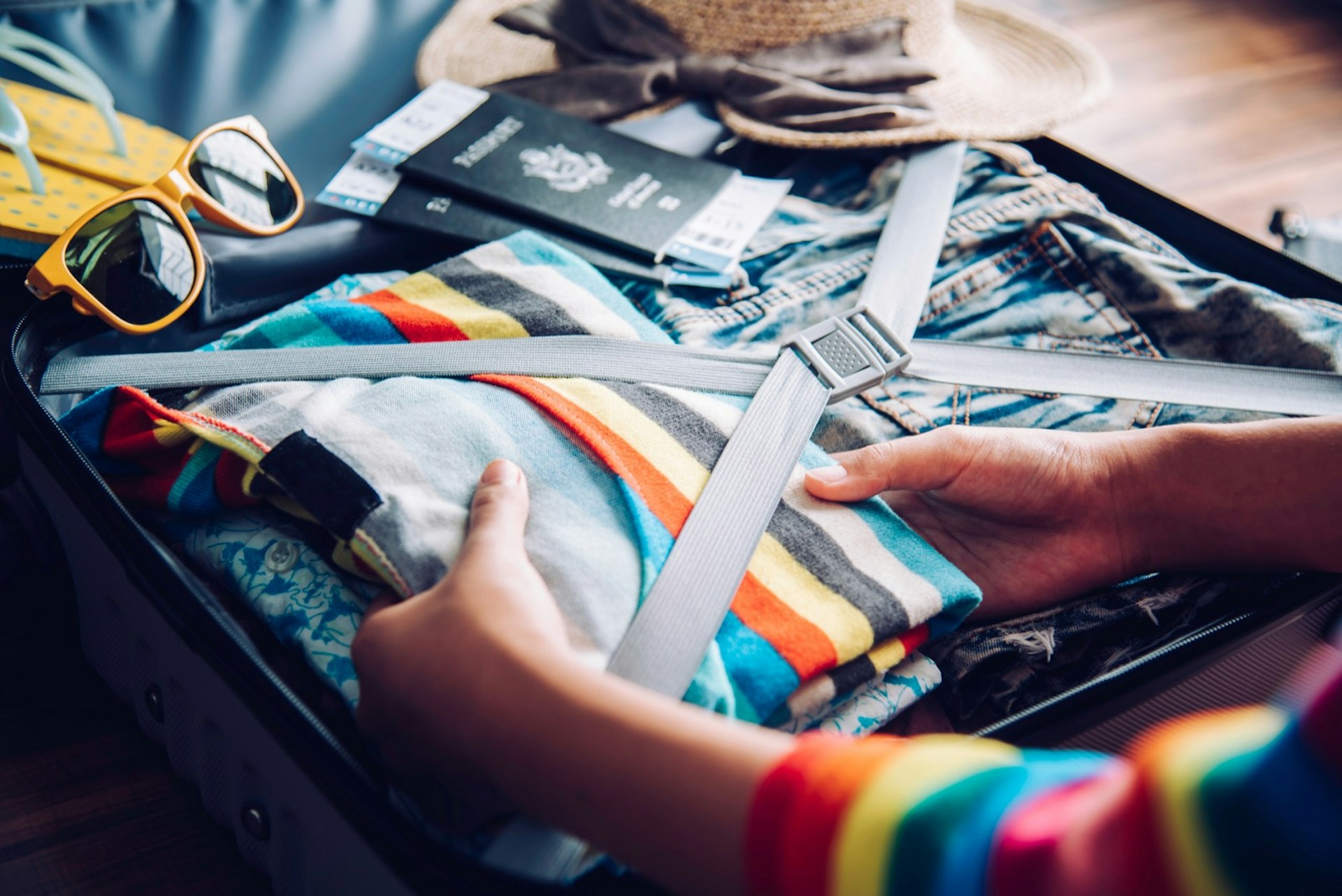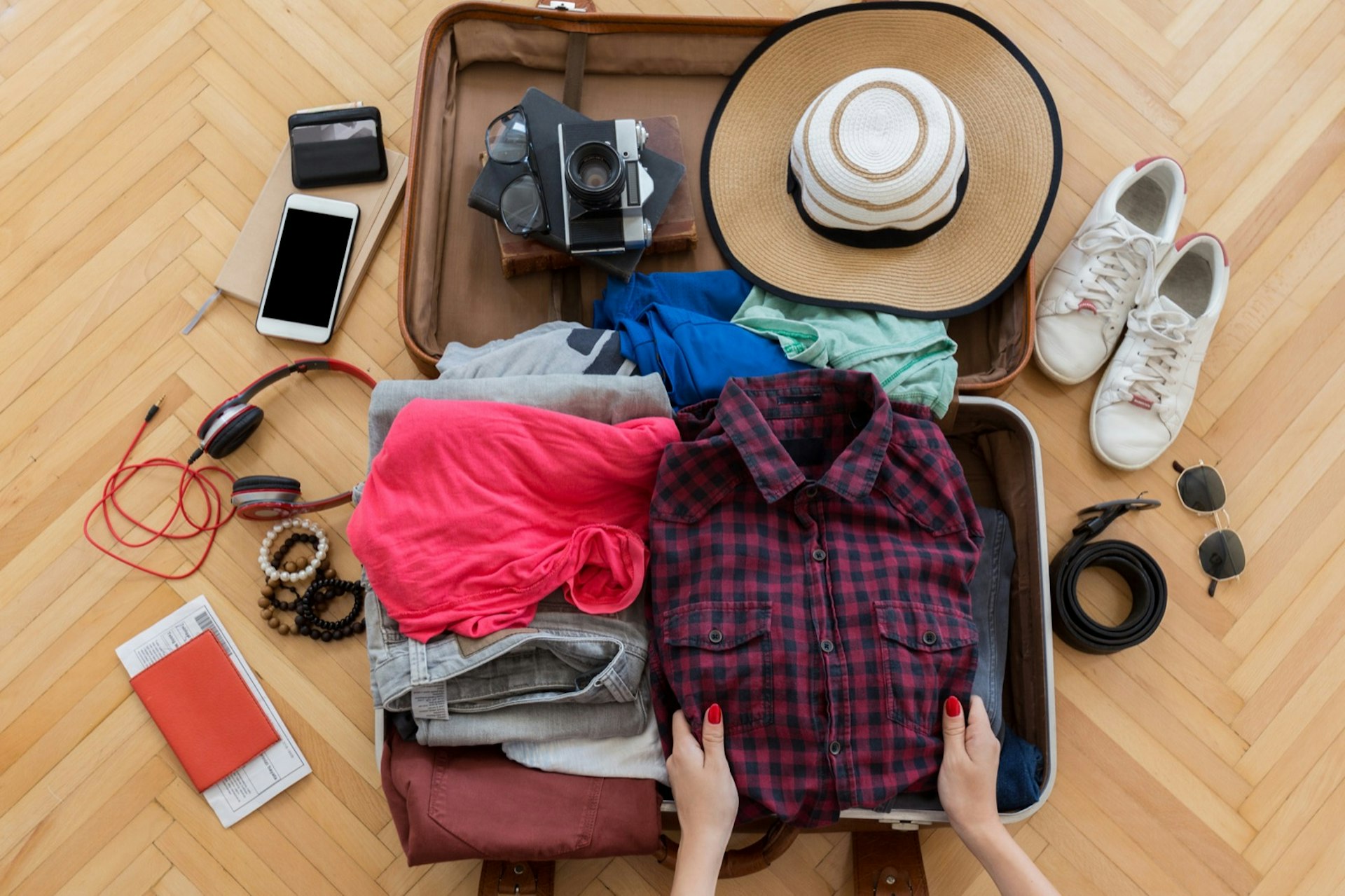So, you’ve narrowed your travel list down and finally booked your next trip. With all the arrangements made, your bags are figuratively packed.
Now there’s only one thing standing between you and the world: actually packing. For many, it’s the most stressful part of trip preparations. But it doesn’t have to be.
Here are our tips for packing like a pro, and check out these links for tips on packing for specific destinations:
Country-specific advice:
Pre-Departure Checklist
Don’t leave home without getting the essentials in check. Here are some of the things that should be on your pre-departure checklist.
Your passport
Ok, you’ve probably thought of this one already, but check the expiration date. Some countries require at least six months’ validity. And if you have to renew, make sure you leave plenty of time, especially during peak vacation periods. Visa requirements can also change over time so don’t assume it’s the same arrangement as before if returning somewhere familiar. You can check if a visa is required at www.iatatravelcentre.com
Pre-book and save
Often booking in advance can save you money —and that includes booking things like parking before getting to the airport. Even if you do so on the morning of your trip you may save. The same is true for ordering currency in advance. If picking up pre-booked currency, take the card you booked with and take note if you have to go to a particular pickup point to get your cash.
Safety
Read up on your destination for up-to-the-minute issues that might affect your plans. The US Bureau of Consular Affairs (travel.state.gov); Australian Department of Foreign Affairs and Trade (smarttraveller.gov.au); and the UK Foreign & Commonwealth Office (fco.gov.uk) are the best places to start.
Get insured
Travel insurance is an important part of your packing routine. Provisions for trip interruption, baggage delay or trip cancellation can help protect your travel investment should your trip get disrupted.
A major part of travel insurance is health insurance. Don’t assume your coverage in your home country will apply when you are traveling abroad. As for cost, expect it to increase as you approach retirement age. For the policy to be effective, every pre-existing condition must be declared, otherwise your policy could be worthless and you could end up with a very large bill. Also check that any activity you’re planning on undertaking will be included in the price.
Medical Matters
Start with a checkup at your doctor’s and dentist – it’s far easier to deal with any potential issues before you hit the road. Try to go as far in advance as you can in case you need to take full courses of immunizations before you travel. You can usually get any necessary vaccinations at your local health clinic, though specialist travel health clinics can also be found in major cities around the world.
Discount and membership cards
If you’re eligible, obtaining an International Student Identity Card (ISIC) or International Youth Travel Card (IYTC) before you go will save you money all over the place – see www.isic.org for details of both. Travelers of any age will benefit from Hostelling International membership (www.hihostels.com). Senior travelers also qualify for travel discounts with some airlines and for ground transport in many countries. Sometimes flashing an ID is enough, sometimes you need to use a local scheme.

Five tips for packing light
Doug Dyment, author of OneBag.com, gives his advice for reducing baggage bulge:
- There’s only one real ‘secret’ to traveling light: a proper personal packing list. It’s a contract you make with yourself, a personal pledge that you will never pack anything that isn’t on your list. And for most people, such a list needn’t include more items than will fit in a single, carry-on bag and is able to accommodate destinations ranging from India to Inuvik.
- Learn about luggage. Most bags on the market are designed to sell easily, rather than facilitate lightweight travel. So learn about design (shapes, configurations) and construction (fabrics, zippers). You may even discover that the primary function of a wheeled bag is to support itself, not efficiently transport anyone’s belongings!
- Avoid liquids; they are the bane of the light traveler. Liquids (and gels) are heavy, bulky, prone to leakage (particularly on planes), and suspicious to security. Did I mention heavy?
- Plan to do some laundry. This needn’t be onerous: done properly, and regularly, it should be more like brushing your teeth. With the right gear (travel clothesline, powder detergent, universal sink stopper), three pairs of underwear will take you anywhere.
- Coordinate your colors. An excellent way to derive maximum use from a modest amount of clothing is to ensure that every item goes with every other one.

Backpacker’s packing list
Ensure nothing gets left behind with our handy checklist
Essentials
- Passport
- Boarding Passes
- Foreign cash
- Credit/ATM cards
- Maps/directions/itinerary
- Guidebook material
- First aid kit
- Travel insurance documents
- Repeat and travel medication
- Folder for all documents
- Large backpack
- Small combination lock
Electronics
- Camera and charger
- Mobile phone and charger
- Tablet and charger
- Headphones
- Plug adapters (see below)
- Headtorch and batteries
- Waterproof pocket camera
- Back-up hard drive
Clothes
- Light jacket
- Waterproof coat
- Light jumpers
- Thin hoodie
- Casual shirts
- Vest tops
- T-shirts
- Loose trousers
- Leggings
- Shorts
- Skirts
- Dresses
- Sandals
- Flip-flops
- Trainers/comfortable shoes
- Belt
- Thin socks
- Underwear
- Sleepwear
- Sun hat/cap
- Swimsuit
- Sarong/shawl
- Hidden zipper belt
Cosmetics
- Sunscreen and aftersun lotion
- Body lotion/moisturizer
- Insect repellent
- Deodorant
- Perfume
- SPF lip balm
- Razor and shaving cream
- Shampoo and conditioner
- Soap/body wash
- Toothbrush
- Toothpaste
- Make-up and remover
- Hairbrush/comb
- Hair products
- Disposable wipes
- Sanitary products
- Nile file/clippers
- Tweezers
- Bug spray
- Laundry kit: travel detergent, braided clothesline, sink-stopper
- Hand sanitizer
- Dental floss
- Small tubes for liquids
- Tissues
Miscelleneous
- Painkillers
- Glasses
- Contact lenses and solution
- Travel journal and pen
- Books
- Sunglasses
- Waterproof watch
- Beach towel/quick-dry towel
- Waterproof bag
- Water purifying bottle
- Sleep sack
- Earplugs
- Refillable bottles
- Travel neck pillow
- Playing cards
- Pocket sewing kit
- Sleeping bag
- Portable stove
- Cutlery
- Bowl/cup
International Plug Sockets
Here’s a run-down of some of the world’s plug sockets and fittings. Along with a converter, you can also get individual plugs. For instance, instead of using a converter to charge your iPhone, buy the country-specific plug (often available through sites like Amazon or a store in country) and just rotate it out.

| Destination | Plug type | Compatible with others |
Destination | Plug type | Compatible with others |
|
|---|---|---|---|---|---|---|
| US | A,B | A | South Africa | M | – | |
| Canada | A,B | A | China | I | – | |
| Thailand | O | – | Singapore | G | – | |
| Australia | I | – | Malaysia | G | – | |
| New Zealand | I | – | Japan | A,B | A | |
| UK and Ireland | G | – | Brazil | N | C | |
| Europe* | C,E,F | C,E,F | India | D | C,D |
*-Except: Switzerland and Liechtenstein (type J, compatible with C); Denmark (type K, compatible with C); Italy (type L, compatible with C if socket is 10A)
This information is reprinted from Lonely Planet’s Best Ever Travel Tips
